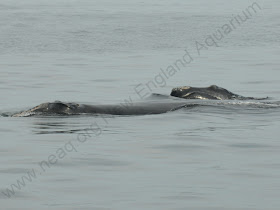It is at this time of year that many North Atlantic right whales begin to think about migrating south, especially pregnant females who will head to waters off of the Southeast U.S. to give birth in late fall and early winter. And in this unusual year with right whales exploring different habitats, we're not sure where they'll show up, but it's likely that many will be within 50 miles of the East Coast.
The eastern seaboard of the U.S. and Canada is host to some of the highest levels of shipping traffic worldwide. Add to that the number of commercial fishing nets and traps along the coast, and you can see it can be quite the perilous trip for these whales. As a matter of fact, collisions with vessels and entanglement in fishing gear are the leading causes of mortality in the right whale population. Keeping right whales out of harm's way as they move through these busy coastal areas is analogous to children crossing streets to get to school after a carefree summer, and there can be cause for concern.
Right whale mom #3513 and her calf on August 20, 2013 in the Bay of Fundy.
Photo: Joy Hampp
We've been working hard to find ways to minimize there risks to right whales by working together with the shipping industry to shift shipping lanes and lower ship speeds in the critical habitats, launching acoustic buoys that can detect whales and warn ships of their presence, and devising new types of fishing gear that could reduce or even prevent entanglements. These programs have shown both success and great promise.
With support of our corporate, foundation, government partners and individuals who have stepped forward to sponsor a whale, we are confident that with time, the yearly migration of the right whale will be as safe for them as heading back to school is for our children. Without the need for crossing guards!
Click here to sponsor a right whale and support our research!

No comments:
Post a Comment